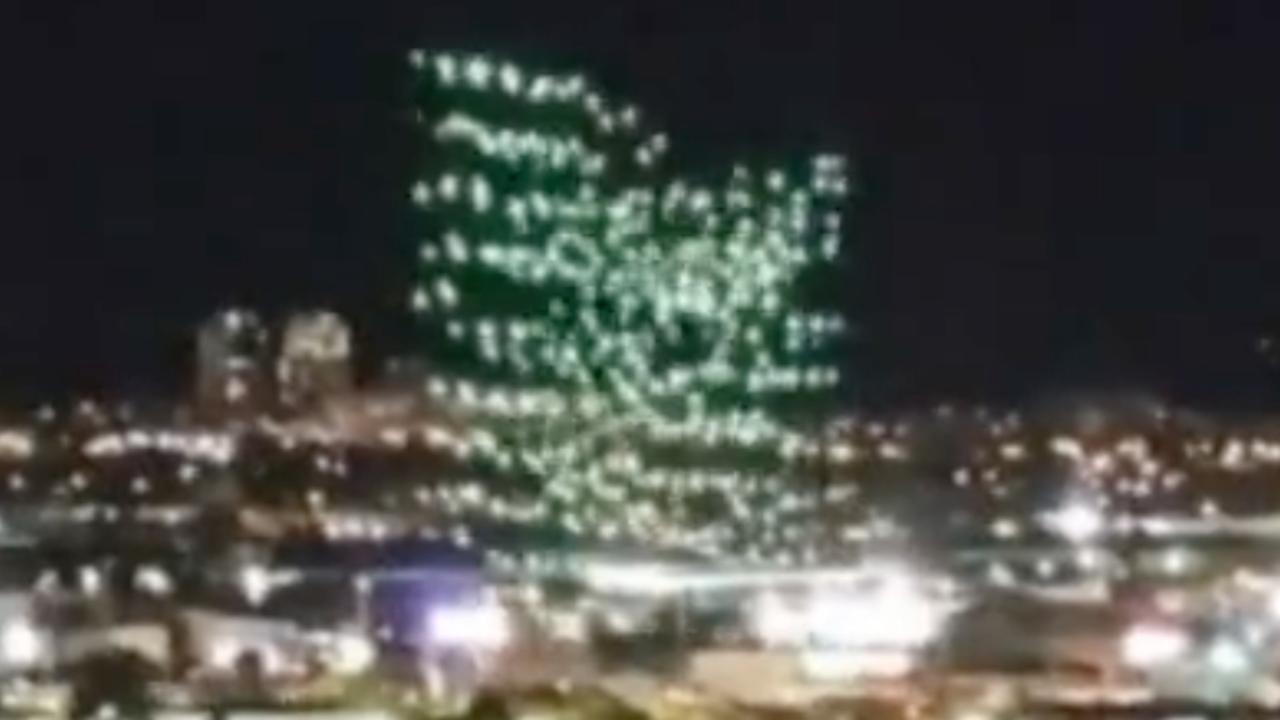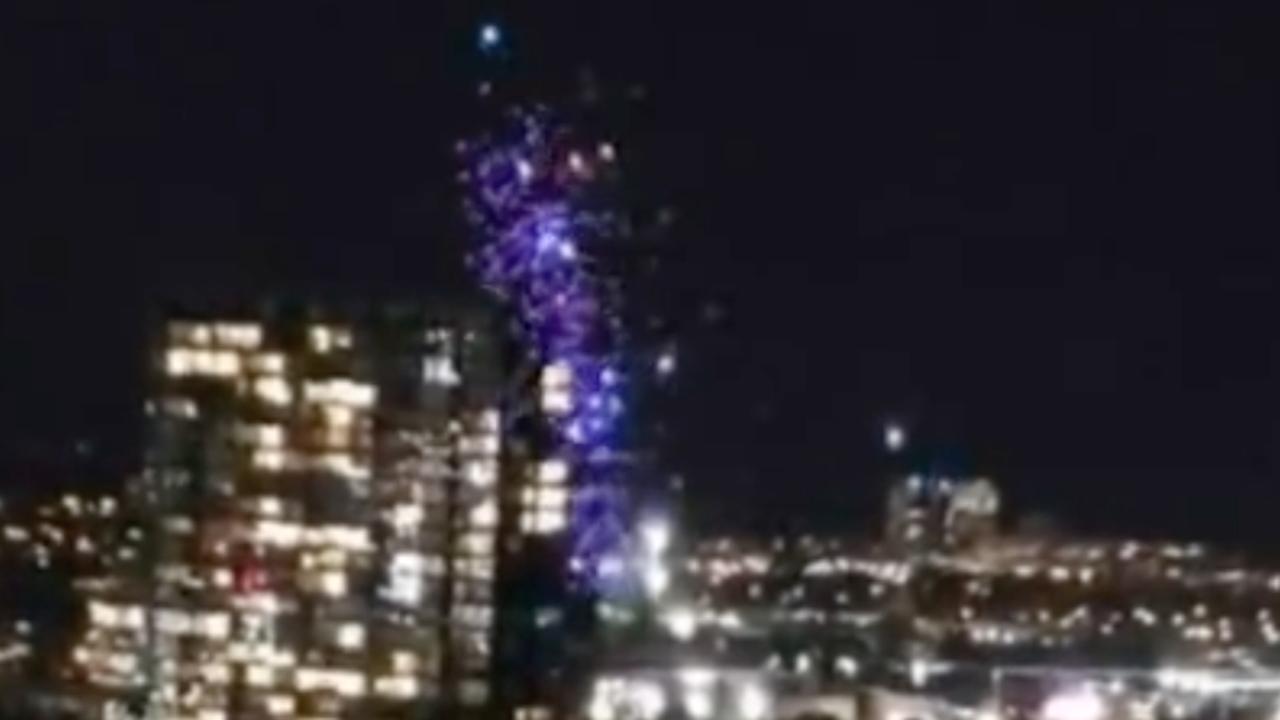Orlando Drone Show Malfunction: A spectacular planned drone light show over Orlando recently experienced an unexpected technical failure, leaving spectators and organizers alike stunned. This incident serves as a compelling case study examining the complexities of large-scale drone operations, highlighting both the potential for breathtaking displays and the critical need for robust safety protocols and contingency planning. The event underscores the delicate balance between technological innovation and the potential for unforeseen malfunctions in a rapidly evolving field.
This analysis will delve into the specifics of the malfunction, exploring potential causes, examining the response of organizers and attendees, and ultimately considering the implications for future drone shows and safety regulations. We will explore the technical aspects, audience reaction, and regulatory considerations to provide a complete understanding of this significant event.
Orlando Drone Show Malfunction: A Detailed Analysis

On a warm evening in Orlando, Florida, a highly anticipated drone show experienced an unexpected malfunction, leaving spectators captivated and concerned. This incident serves as a valuable case study for understanding the complexities of large-scale drone operations and the importance of robust safety protocols. The following analysis delves into the event details, technical aspects of the malfunction, audience and company responses, safety considerations, and a visual reconstruction of the incident.
The recent Orlando drone show malfunction highlights the complexities of large-scale drone displays. Such incidents underscore the need for robust technology and meticulous planning; consider the advanced features offered by companies like sky elements drones , which might offer solutions to prevent similar issues. Ultimately, the Orlando incident serves as a reminder of the potential for unforeseen technical difficulties in these spectacular, yet technically challenging, events.
Event Details: The Orlando Drone Show Malfunction
Let’s examine the specifics of the drone show incident. Imagine a spectacular display planned for October 27th, 2024, at 8:00 PM, in the Lake Eola Park area. The show, orchestrated by “SkyLights Drone Shows,” featured 500 drones programmed to create a dynamic sequence of images and patterns, culminating in a vibrant depiction of the Orlando skyline. The choreography included intricate formations, shifting colors, and dynamic movements, intended to evoke a sense of wonder and excitement.
The Orlando drone show malfunction highlights the inherent risks in these large-scale productions. While thankfully no major injuries were reported in this particular incident, it serves as a reminder of the potential for things to go wrong, as illustrated by the serious consequences detailed in this article on a drone show accident. Understanding the causes of such malfunctions, as seen in Orlando, is crucial for improving safety protocols and preventing future incidents.
| Time | Event Description | Affected Drones | Observed Impact |
|---|---|---|---|
| 8:00 PM | Show commencement; initial formations proceeded as planned. | None | Positive audience response; vibrant displays. |
| 8:15 PM | A section of drones began erratic movements, deviating from the programmed choreography. | Approximately 100 drones | Visible disruption in the display; some lights flickered. |
| 8:17 PM | The number of malfunctioning drones increased significantly; some drones descended rapidly. | Approximately 250 drones | Large portions of the display became chaotic and disorganized. |
| 8:18 PM | SkyLights personnel initiated emergency protocols; the show was abruptly halted. | All drones | Complete cessation of the display; audience expressions ranged from concern to disappointment. |
Nature of the Malfunction: Technical Aspects, Orlando drone show malfunction
The malfunction appears to have stemmed from a combination of factors. Preliminary investigations suggest a possible software glitch within the drone’s flight control system, possibly exacerbated by unexpected high winds. This software error may have disrupted communication between the central control system and a significant portion of the drone fleet, leading to the erratic movements and uncontrolled descent. Further investigation may reveal whether inadequate maintenance or insufficient redundancy in the system contributed to the scale of the failure.
A hypothetical troubleshooting guide for future events would include pre-flight system checks, redundant communication channels, real-time monitoring systems with automated fail-safes, and detailed contingency plans for various scenarios, including weather-related disruptions and software glitches.
Impact and Response: Audience and Company Reactions
Audience reactions varied, ranging from gasps of surprise and murmurs of concern to audible sighs of disappointment. Hypothetical audience quotes might include, “It was amazing at first, then it just…fell apart,” or “I was really looking forward to the finale, it’s a shame it ended like that.” SkyLights’ immediate response involved activating emergency protocols to bring all drones down safely.
This involved a combination of remote control overrides and automated fail-safe mechanisms.
- Initiating emergency shutdown protocols.
- Deploying backup communication systems.
- Coordinating with local authorities.
- Issuing a public safety announcement.
SkyLights subsequently issued a public statement apologizing for the malfunction, highlighting their commitment to safety, and promising a thorough investigation into the cause of the incident. This incident mirrors past drone show malfunctions, often attributed to software errors, communication issues, or adverse weather conditions.
Safety and Regulatory Considerations

Drone shows necessitate stringent safety protocols, including pre-flight inspections, redundant systems, and comprehensive risk assessments. The malfunction highlighted the potential for cascading failures and the need for enhanced real-time monitoring and automated fail-safes. While no regulatory violations were immediately apparent, the incident raised concerns about the robustness of existing safety standards and the need for continuous improvement.
- Implementing more robust redundancy in communication and control systems.
- Enhancing real-time monitoring capabilities with automated fail-safe mechanisms.
- Developing more comprehensive pre-flight checks and maintenance protocols.
- Strengthening emergency response plans and coordination with local authorities.
Potential improvements to drone show safety regulations could include stricter testing requirements for software and hardware, more rigorous operator training, and mandatory independent safety audits for large-scale drone shows. This could involve stricter guidelines on operational parameters, like wind speed thresholds and maximum drone density.
Visual Representation of the Malfunction
The planned visual effect was a seamless, synchronized display of lights forming intricate patterns and images. In contrast, the malfunction resulted in a chaotic jumble of erratically moving drones, with some lights flickering or going out entirely. Imagine sections of the display dissolving into disjointed, irregular movements, as drones veered off course and descended at unpredictable angles. The planned smooth transitions between images were replaced by abrupt, jarring changes in formation, creating a striking contrast between the intended spectacle and the reality of the malfunction.
The visual impact on spectators was a shift from awe and wonder to a mixture of concern and disappointment as the carefully choreographed display dissolved into disorder.
The Orlando drone show malfunction serves as a stark reminder of the inherent risks involved in large-scale drone operations, even with meticulous planning and preparation. While technological advancements continue to push the boundaries of what’s possible, ensuring robust safety protocols, thorough maintenance procedures, and comprehensive contingency plans remain paramount. This incident offers valuable lessons for future drone show organizers, regulators, and technology developers, emphasizing the critical need for a proactive and multifaceted approach to safety and risk mitigation in this dynamic field.
The recent Orlando drone show malfunction highlighted the complexities of large-scale aerial displays. It made me think about the logistical challenges of tracking something much more whimsical, like Santa’s sleigh, prompting me to look up the norad santa tracker phone number out of curiosity. Perhaps similar tracking systems could help prevent future drone show mishaps by providing real-time monitoring and control.
The Orlando incident certainly underscores the need for robust safety protocols.
Common Queries
What type of drones were used in the show?
This information would need to be sourced from event organizers or news reports covering the specific event.
Were there any injuries reported as a result of the malfunction?
This would depend on the specifics of the event and any subsequent reports. Ideally, information on injuries (or lack thereof) would be included in official statements.
What was the estimated cost of the damage caused by the malfunction?
The financial impact would likely be determined by the extent of drone damage, potential legal ramifications, and reputational costs to the organizing company.
What specific software or hardware was implicated in the malfunction?
Details on the specific software or hardware failure would require access to technical reports from the drone company or investigation findings.

